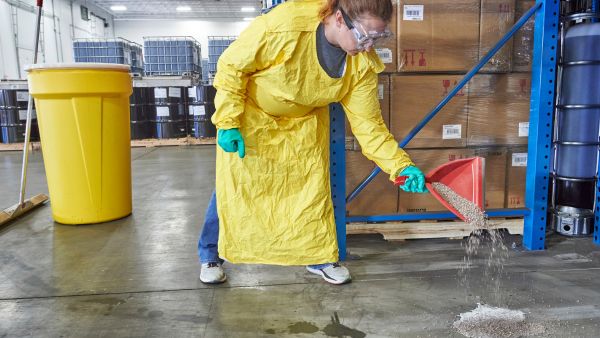Proper Disposal of Chemicals
Mishka Binns, Industry Business Advisor
August 29, 2023

Proper disposal of chemicals is of paramount importance to ensure the protection of human health and the environment. Federal regulations play a critical role in guiding the safe and responsible disposal of chemicals. The United States Environmental Protection Agency (EPA) has established comprehensive guidelines under The Resource Conservation and Recovery Act (RCRA) in title 40 of the Code of Federal Regulations. RCRA outlines the procedures and requirements for handling and disposing of various hazardous materials. These regulations are designed to prevent pollution, reduce environmental risks, and safeguard the well-being of both people and ecosystems.
The federal regulations provide a systematic framework for classifying and managing chemical waste based on their hazardous characteristics or listing. It categorizes the waste into various classes, such as ignitable, corrosive, reactive, or toxic, and prescribes specific disposal methods for each category. This ensures that chemicals are treated and disposed of in ways that minimize potential harm. Proper chemical disposal methods can vary based on the specific type of chemical, its hazard classification, and local regulations. For example, some chemicals can be recycled or reprocessed into usable products. While others can be neutralized before disposal to make them less harmful. Still some chemicals cannot be easily treated or neutralized and are disposed of in secure landfills designed to contain hazardous waste.
Chemicals must be packaged, labeled, and transported for disposal. The regulations help prevent accidents during transportation and ensure that disposal facilities are aware of the nature of the materials they are handling. Proper packaging and labeling facilitate the safe handling of chemicals from their point of origin to their ultimate disposal site, minimizing the risk of leaks, spills, and other incidents that could harm human health or the environment. Hazardous waste must be managed safely from "cradle to grave" meaning from the time it is created, while it is transported, treated, and stored, and until it is disposed.
Furthermore, proper record-keeping and documentation of chemical disposal activities must be maintained. This transparency is crucial for accountability and traceability, allowing regulatory authorities to monitor compliance and identify any potential violations. Maintaining accurate records helps demonstrate that disposal procedures are being followed correctly and provides a historical record that can be referenced in the event of audits or investigations.
Non-compliance with RCRA regulations can result in severe penalties, underscoring the importance of adhering to proper disposal practices. Fines, legal actions, and reputational damage can result from improper chemical disposal. By strictly adhering to these regulations, individuals, businesses, and organizations can contribute to a cleaner, safer environment and reduce potential enforcement actions for their business.